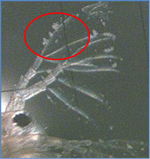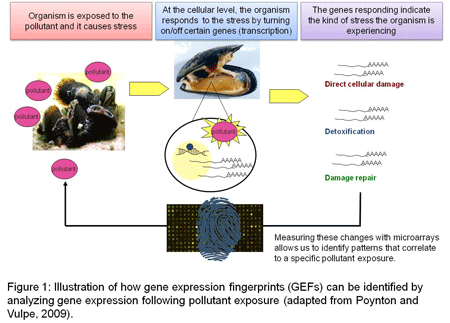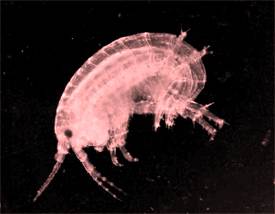| Home | Research | Teaching |
Research Team: Dr. Helen Poynton (left); Bonnie Blalock (lab technician) (right)


Research Projects:
 Developing molecular biomarkers as detection tools for emerging contaminants including nanoparticles (NPs) and use them to understand the bioavailability of NPs in environmental matrices. Nanotechnology is a thriving sector of the economy which continues to grow exponentially, adding new products to the market almost on a daily basis. As nanotechnology grows and NPs are incorporated into many household products, NPs are likely to enter the aquatic environment through several routes where they will interact with the indigenous fauna. To understand the fate, transport and potential effects of Nanomaterials on the aquatic environment, we are investigating the molecular effects of metal based NPs on the two aquatic crustaceans, Daphnia magna and Hyalella azteca. These two important toxicity test organisms are good indicators of NP pollution in the water column or sediments.
Developing molecular biomarkers as detection tools for emerging contaminants including nanoparticles (NPs) and use them to understand the bioavailability of NPs in environmental matrices. Nanotechnology is a thriving sector of the economy which continues to grow exponentially, adding new products to the market almost on a daily basis. As nanotechnology grows and NPs are incorporated into many household products, NPs are likely to enter the aquatic environment through several routes where they will interact with the indigenous fauna. To understand the fate, transport and potential effects of Nanomaterials on the aquatic environment, we are investigating the molecular effects of metal based NPs on the two aquatic crustaceans, Daphnia magna and Hyalella azteca. These two important toxicity test organisms are good indicators of NP pollution in the water column or sediments.
Developing biomarkers to detect bioaccumulation of contaminants in the blue mussel Mytilus edulis.On the East Coast of the United States, the blue mussel is an important sentinel organism which has become an integral part of the NOAA Mussel Watch Program. However, with the complexity of effluents entering our coastal areas, monitoring for the presence of all potential contaminants is cost prohibitive. Therefore, we are developing genomic-based tools for monitoring exposure and bioaccumulation of pollution in the blue mussel. Using genomic tools we are able to establish a gene expression fingerprint (GEF) (see figure 1 below) for different pollutants and this allows us to use the GEF as a detection tool for those chemicals in the environment. Our goal is to implement genomic tools alongside the Mussel Watch Program to gain better insight into which pollutants drive coastal ecosystem impairment.


Using molecular biology and genomics to understand pyrethroid toxicity and resistance in Hyalella azteca. H. azteca is an importantfreshwater crustacean which often resides in streams bordering agricultural lands and is highly susceptible to pesticide toxicity. However, several populations of H. azteca have been identified as resistant to different pesticides. We are investigating the mechanism behind this resistance using genomic tools and traditional molecular methods to identify potential mutations which confer resistance.
